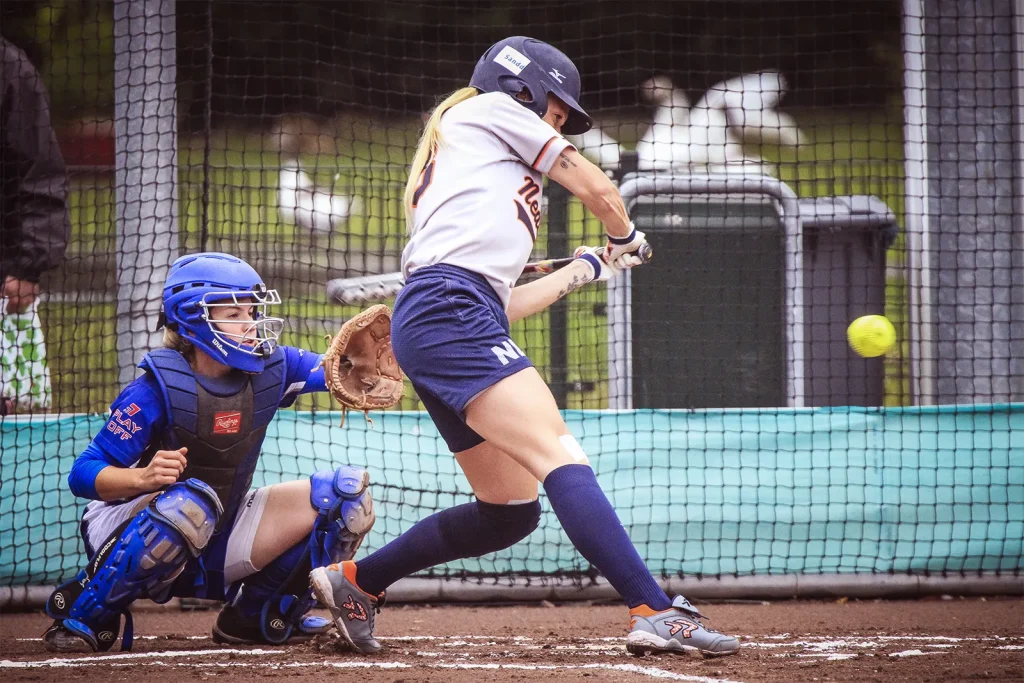
A History of Softball
The history of softball and the history of baseball are, of course, intricately interwoven. Some historians believe that softball was created after baseball and is the sibling, albeit the younger, of the two sports.
Interestingly, the games of football, boxing or pugilism, and boating games all had an influence on softball history. A review of the game’s history shows the subtle and not so subtle influences that different sports had on the game of softball and its development.
History Of Softball: Its Beginnings
Softball was created and influenced by a football game, the glove used in boxing matches, and a club created for boating. A member of Yale and Harvard alumni, George Hancock, had gathered with other alumni members at a Chicago based boat club on Thanksgiving in the late 1870s. The club was called the Farragut Boat Club and the precise year was 1887. Group members had gone to the boat club to observe a Yale versus Harvard football game.
While awaiting regular game updates from telegrams being sent from the Polo Grounds located in New York, one of the Yale alumni was joking around and tossed a boxing glove at one of the Harvard alumni. The Harvard graduate used a broom handle to deflect that tossed glove, and then a playful game of indoor baseball gaming followed. Hancock bound up the boxing glove by tying it up with its laces: this made the ball shaped more like a ball used in baseball. The group of men ended up playing the game for a good hour and decided that it was a game that many would enjoy. Hancock later documented the game regulations and had large softballs and bats with rubber tips created so the game could be played safely indoors.
Since winters were harsh in the Chicago region, the popularity of “indoor softball” was certain. The game served as a way for baseball fans to get some practice during the harsher cold months. By the year 1889, an “indoor baseball” league was created. During the summertime, the game was also played outdoors. Later, Lewis Rober, a Minneapolis firefighter, help shaped some of the game’s regulations by insisting on seven innings; the game was played by the firefighters between fire calls and as many as 3000 spectators would observe. In the year 1913, the game of softball was played on playgrounds and in parks after being officially adopted by the Minneapolis Park Board.
History Of Softball: Its Evolution
The game of softball was not really referred to as softball until the year 1926. The latter moniker was created by members of the YMCA in Denver. In 1933, the first tournaments were organized and were conjoined with events at the World’s Fair: this was an effort put forth by Michael Pauley, a salesman, and Leo Fischer, a reporter. The two men invited as many as fifty-five softball teams to play in three different softball divisions including a women’s slow-pitch division, a men’s slow pitch division, and a men’s fast pitch division. The games that were organized were observed by over 350000 people. These first games helped to spread the softball game quickly; within seven years time there were roughly five million people that had played or that were participating in softball games.
In 1933, the Amateur Softball Association was established. The latter organization helped to further regulate the sport; this particular agency is responsible for devising special rules pertaining to various age groupings. The standard sized softball for game use is now a twelve-inch ball for adult gaming. When it comes to youth games, the ball is eleven inches in size. Meanwhile, some leagues choose to play with a ball that is sixteen inches wide. The ball size in softball is further decided based upon whether or not the gaming involves slow-pitch or fast pitch plays. The field size will also be determined by the age of the participants.
History Of Softball: More Information
While softball first started out in places like Chicago or Milwaukee, as the game became more popular it spread to the upper Midwest area and to Canada too. The first softball league created outside the boundaries of the US was created in Canada in the region of Toronto in the late 1890s. As the game spread, it was identified under a number of monikers including pumpkin ball, mush ball, and cabbage ball. The ball and bat sizes would vary depending upon who was playing and where the game was played. In the early 1930s, a group of men travelled around the nation playing the softball game: they identified their group as the Kids and Kubs. All of the men in the latter group were no younger then seventy-five and they participated in softball games fully dressed in business suits and ties. Following the conclusion of the second World War, Canadian soldiers brought the game to regions in the Netherlands. By the late 1930s, this game was even being played in parts of Australia.
Since the early 1950s, the game of softball has been regulated by the International Softball Federation. By the mid 1960s, women played the first fast pitch international championship games hosted in Australia in the city of Melbourne. In 1966, the first men’s international competition was hosted in Mexico City. Since the year 1970, like the Olympics, international softball tournaments are played on an every four-year basis.
In the early 1980s, championships for women’s softball teams were hosted by the National Collegiate Athletic Association and the tournaments were identified as the Softball World Series. In the late 1990s, the game of fast pitch softball for women was an introduced to Olympic gaming. It was not until the early 1960s that the game became popular in the United Kingdom and about twenty years later the first softball league for women was formed. By the late 1970s the American Professional Slow Pitch League was also formed; this was one of as many as three professional softball leagues established between 1977 and 1982.

